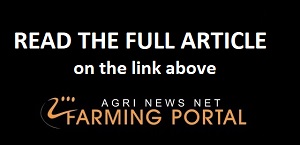Long, sun-drenched summers and mild, wet winters contribute to the ideal conditions for viticulture at the Cape.
Liberated by the advent of democracy in 1994, the South African wine industry has gone from strength to strength, with exports reaching 319 million litres in 2020. Currently, more than 2 778 farmers cultivate some 92 005 hectares of land under vines. Some 269 096 people are employed both directly and indirectly in the wine industry. The annual harvest in 2019 amounted to 1 247 522 tons (973.6 million litres), of which 86% was used for wine. The annual harvest in 2020 amounted to 1 342 109 tons (1 042.0 million litres), of which 86% was used for wine.
The South African wine industry is backed by various organisations. The Department of Viticulture and Oenology, Stellenbosch University offers pre-graduate as well as post-graduate degrees in Viticulture, Oenology and Wine Biotechnology; Elsenburg Agricultural College offers a course in cellar technology and the ARC-Nietvoorbij is a research facility with various experimental farms. In a joint venture, the South African wine and table grape industries and Stellenbosch University established the Institute for Grape and Wine Sciences (IGWS) to enhance the international competitiveness of the wine and table grape industries. This evolved into a hub called Innovation in the Grape and Wine Sectors.
All wines for export must be granted an export licence. Samples of each batch of wine destined for foreign countries are sent to the Wine & Spirit Board at Nietvoorbij, Stellenbosch where they undergo detailed tasting tests and chemical analysis in the laboratories before licences are granted. An official seal is given to each bottle by the Wine & Spirit Board, which verifies that the claims made on the label regarding origin, vintage and grape variety are true. South Africa leads the world in environmental sustainability and regulated production integrity. From the 2010 vintage, a new seal for South African wines was introduced, which traces the wine from vine to bottle. The seal is a world first, and certifies a wine’s integrity as well as sustainability. You can access the Sustainable Wine South Africa website here.
 South African wine industry eyes more exports to China
South African wine industry eyes more exports to China
As far as international wine production is concerned, Italy leads with 18.3% of the total, France is second with 17%, Spain third with 13.2% and South Africa eighth with 4.0% (2020 figures).
Wine producers
Estate wineries, which under the original legislation could make wine only from grapes grown on their own land. In 2004, a new dispensation did away with the traditional 'estate' and focuses instead on 'estate wine' which must be produced in contiguous vineyards farmed as single units. These units must also be equipped with facilities to enable all processes up to final certification. All previously registered estates have now automatically been registered as Units for the Production of Estate Wine. For the first time, they can use their names to brand their total wine production (ie estate as well as non-estate) but only certified estate wine may be labelled and marketed as such.
Producer cellars (co-operatives), which on a communal basis process the grapes of their farmer member shareholders into wine - these co-operatives alone have invested vast amounts in production equipment and they press about 80% of South Africa's total wine harvest.
After an early autumn and warm weather mid-June, winter is now well underway, and the cold, rain and snow bode well for wine grape vineyards that are resting in preparation for the 2022 harvest. Vineyards should also have enough reserves to carry them through the first few weeks of spring when it warms up again. While the first leaves are still too small to adequately photosynthesise, the reserves help meet the vine’s growth requirements until the vine reaches a shoot length of about 30 – 50 cm and leaves are large enough to be self-sufficient. The new trend that come to light over the past few years is that winter is busy moving on. The majority of the rainfall and cold weather are now more common in July and August, while the weather conditions in June are still quite inconsistent,”
Independent cellars and a number of wholesalers who buy in both grapes and wine, and make wine for bottling under their brand names, as well as making wine from grapes grown on their own wine farms.
Wines of South Africa is an industry owned, not-for-profit organisation. Its mission is to contribute to the global success of the South African wine industry by building Brand South Africa.
















